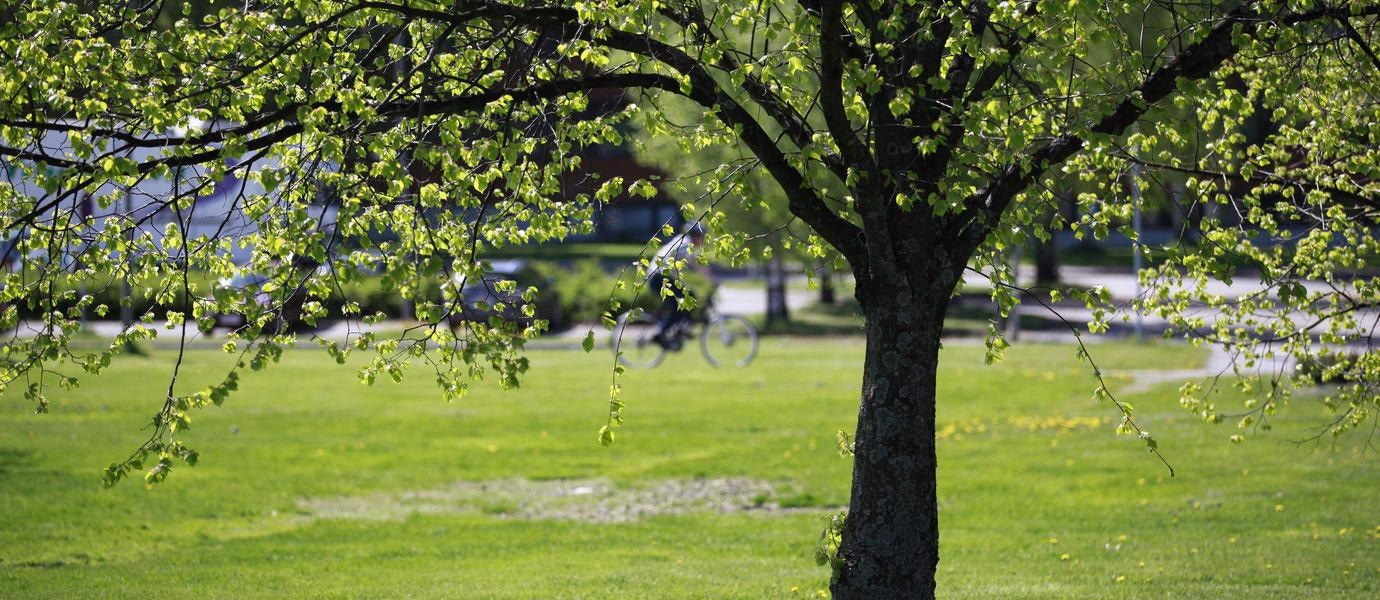Jun 15 2021
Globally, countries and cities are racing toward carbon neutrality, with some experts already discussing the need to eventually achieve carbon negativity.

Image Credit: Mikko Raskinen/Aalto University.
While carbon footprint declaration is applied in construction projects to facilitate the selection of products for low-carbon buildings, such standards are yet to become available for green elements, such as plants, bushes and soil.
Now, a new study headed by Aalto University is the first-ever attempt to map out how green infrastructure can serve as a resource for cities to achieve carbon neutrality. The study was performed in association with the Natural Resources Institute of Finland (Luke) and the University of Helsinki.
The study mapped the lifecycle phases of soils, mulches and plants to determine the primary considerations required to establish standards for products that are often used in green urban spaces.
Green infrastructure is a building block of cities, yet its products haven’t yet been systematically assessed for their carbon storage potential. We’re now starting to better understand the great importance of these nature-based solutions. Standards for these commonly used products would help us not only better plan our cities, but also help us reach carbon neutrality.
Matti Kuittinen, Adjunct Professor, Aalto University
During their analysis, the researchers traced the prevailing carbon footprint standards, which are extensively used in the construction sector. Such standards would need to be developed if they were to be used on green infrastructure.
For this purpose, the team compared the flows of carbon in plants, mulches and soils over their lifespan. They also attempted to convert these carbon flows into the standardized reporting format used for traditional building products.
One of the main challenges in assessing the carbon storage potential of plants is that the product you buy changes over time. If you install 50 bricks in a building and remove them in a decade, you still have 50 bricks. If you plant 20 seedlings, in ten years’ time, you might have 30 large bushes thanks to growth and spread.”
Matti Kuittinen, Adjunct Professor, Aalto University
The suggestions put forth in this study provide a solid basis for designing regional and global — for instance, European Union — standards for green infrastructure. The objective of the study is to prove the claims of carbon storage and to ultimately develop a tool that allows landscape designers to plan new areas or refurbish the existing urban spaces.
The suggestions are specifically relevant to nations and regions, like the Nordics, where urban landscapes have been conventionally integrated with nature but these regions can also support other areas to achieve their carbon goals.
Cities need to take all kinds of actions to reach carbon neutrality. The benefit of green infrastructure is that once we know its carbon footprint, it doesn’t require new, expensive technology; it’s a simple, wide-reaching solution that can make real impact. This is an area that needs real attention from decision-makers in the European Union and elsewhere.
Matti Kuittinen, Adjunct Professor, Aalto University
The team from Aalto University, in association with consortium partners from the Co-Carbon project, is now initiating their field tests to find out the precise carbon sequestration potential of plants at different growth stages. While the carbon storage potential of trees is considerably well-known, the study is aiming to be the first to assess the potential of plants and bushes — elements that are often used in urban landscaping.
Researchers at Luke are also developing a tool to represent the changes in carbon storage of soil and plants at the regional level caused by land-use changes. A tool like this can allow planners to target and sustain the existing carbon storage in soil and plants.
The open-access study was published in the International Journal of Life Cycle Assessment.
Journal Reference:
Kuittinen, M., et al. (2021) Environmental Product Declarations for plants and soils: how to quantify carbon uptake in landscape design and construction? The International Journal of Life Cycle Assessment. doi.org/10.1007/s11367-021-01926-w.